Day 1 :
Keynote Forum
Thomas Prevenslik
QED Radiations, China
Keynote: The causal link between nano-toxicology and human health: DNA damage by UV emission from nanoparticles
Time : 09:30-10:00
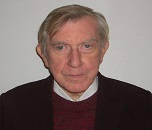
Biography:
Thomas Prevenslik developed a theory of QED based on QM. By this theory, heat absorbed by NPs is deposited almost entirely in their surfaces because of high surface-to-volume ratios. NP atoms are therefore placed under high EM confinement over nano-scale wavelengths that by the Planck law of QM precludes the atoms from having the heat capacity to conserve heat by changes in temperature. Instead, EM confinement converts the surface heat into standing EM radiation inside the NPs, any NP quantum states having lower transition frequencies than the standing EM radiation frequency are indirectly excited with emission to the surroundings. In the instant topic of nanotoxicology, the emission of standing EM radiation at UV levels damages nearby DNA and by scrambling genes establishes the causal link to diverse human health problems.
Abstract:
The causal link between nano-toxicology and human health is proposed to be the scrambling of genes in DNA by UV radiation from NPs heated in the gut upon the ingestion of food. NPs stand for nanoparticles. By classical physics, NPs conserve body heat by changing temperature. QM differs as the Planck law requires the NP atoms have vanishing heat capacity thereby precluding any change in temperature. QM stands for quantum mechanics. Instead, NPs conserve heat by the emission of EM radiation. For heat capacity to vanish; however, the NP atoms must be placed under nanoscale EM confinement. But NPs having high surface-to-volume ratios confine absorbed body heat almost entirely to their surfaces, the surface heat thereby providing the EM confinement of NP atoms over nanoscale wavelengths. QED then conserves the surface heat by creating EM radiation standing between diametrically opposite NP surfaces, but differs from the complex relativistic QED by Feynman and others. Briefly stated: QED conserves heat supplied to a NP absent heat capacity by creating EM radiation having half-wavelength Æ›/2=nd, where n and d are the refractive index and diameter of the NP. For example, QED induces silver NPs having diameter d=90 nm and n=1.35 to emit UVC radiation near Æ›=254 nm - a lethal level for DNA damage, and if the scrambled genes are not repaired by the immune system it may lead to cancer, birth defects, etc. QED does not rely on UV produced by speculative multi-IR photon up conversion as the UVC is directly excited. Figure 1 illustrates the UV emission from a layer of 50 nm silver NPs measured by a UVC light meter. The toxicity of NPs in GM food is briefly discussed. GM stands for genetically modified.
Keynote Forum
Masaki Otagiri
Sojo University, Japan
Keynote: S-nitrosated human serum albumin dimer with superior antitumor activity, long blood retention and excellent EPR effect
Time : 10:00-10:30
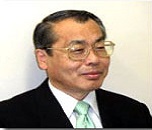
Biography:
Masaki Otagiri is currently a Professor and Dean of Faculty of Pharmaceutical Sciences, Sojo University. He completed his Graduation at Nagoya City University with a PhD degree in 1975. In 1980, he joined Pharmaceutics department, Faculty of Pharmaceutical Sciences, Kumamoto University as an Associate Professor and then promoted to Professor of Bio-pharmaceutics department, Kumamoto University in 1983. After his retirement from Kumamoto University in 2009, he appointed as Professor of Faculty of Pharmaceutical Sciences and Director of DDS Research Institute, Sojo University, Kumamoto.
Abstract:
Recombinant human serum albumin dimer (HSA-dimer) was produced by the yeast Pichia pastoris. HSA-dimer has a longer circulation, compared with HSA-monomer. Thus, HSA-dimer is expected to have an enhanced accumulation in solid tumor via the EPR mechanism due to its large molecular weight (130 kDa). In this conference, we will present a novel DDS system of NO, potential anticancer therapeutic, using HSA-dimer as a carrier, namely, SNO-HSA-dimer. SNO-HSAdimer treatment induced apoptosis of C26 tumor cells in vitro, depending on the concentration of NO. In in vivo experiments, SNO-HSA-dimer was found to specifically deliver large amounts of cytotoxic NO into tumor tissue but not into normal organs in C26 tumor-bearing mice. Interestingly, SNO-HSA-dimer caused a much higher concentration of NOx in the tumor than SNO-HSA-monomer. Moreover, especially, SNO-HSA-dimer has a high level of blood retention. The accumulation of SNO-HSA-dimer in tumor tissue is significantly high compared with SNO-HSA-monomer, suggesting that S-nitrosation of SNO-HSA-dimer further enhanced its EPR effect. Next, we examined whether SNO-HSA-dimer can enhance the activity of other macromolecular antitumor drugs via the augmented EPR effects. As antitumor drugs, we selected N-(2-hydroxypropyl) methacrylamide (HPMA)-zinc protoporphyrin (ZnPP) and doxil. HPMA-ZnPP (mean particle size: 80 nm) forms micelles and doxil has liposomal structure (mean particle size: 90 nm). The tumor growth was significantly inhibited when the two compounds were given simultaneously. The combination of SNO-HSA-dimer inhibited the tumor growth, compared with doxil or SNO-HSA-dimer alone. Furthermore, the combination of doxil and SNO-HSA-dimer significantly reduce the number of lung metastasis. Finally, possible side effects of SNO-HSA-dimer administration were evaluated by measuring blood pressure, heart rate and biochemical parameters. Fortunately, none of these above parameters were significantly affected by repeated administration of SNO-HSA-dimer. Thus, SNO-HSA-dimer strategy is a safe and effective therapeutic approach for improving the antitumor effects of macromolecular drugs.
Keynote Forum
Pavle Radovanovic
University of Waterloo, Canada
Keynote: Tuning plasmon resonance of In2O3 nanocrystals throughout mid-infrared: Dopant, phase, and electronic structure dependence
Time : 10:30-11:00

Biography:
Pavle Radovanovic completed his PhD at University of Washington, Seattle. Following his Post-doctoral studies at Harvard University, he started his independent research career at University of Waterloo in 2006. At Waterloo, he initiated a new research program in Physical-inorganic Chemistry focusing on “The design, synthesis, and fundamental physical and chemical properties of multifunctional low-dimensional materials”. His work has been recognized by number of honors and awards, including Canada Research Chair (NSERC), Early Researcher Award (Ontario Ministry of Research and Innovation), Mobility Award (French Ministry of Foreign Affairs), and CNC-IUPAC Award.
Abstract:
Synthesis, properties, and applications of gold and silver nanostructures with tunable localized surface plasmon resonances (LSPRs) have been a subject of intense investigation over the past decade. The focus on these noble metal plasmonic nanomaterials stems from their facile synthesis, stability to oxidation, and the visible-range LSPR transitions. However, among other drawbacks, these nanostructures are also costly for large-scale applications and exhibit high optical losses. Consequently, doped transparent metal oxide nanocrystals have emerged as a new class of unconventional plasmonic materials. In this talk, author will present the results of our recent work on colloidal indium oxide-based plasmonic nanocrystals. Using size-structure correlation, indium tin oxide (ITO) nanocrystals were prepared in the stable bixbyite (bcc-ITO) and metastable corundum (rh-ITO) phase, revealing a dramatic difference in their optical and electrical properties. Unlike rh-ITO, bcc-ITO nanocrystals exhibit a strong LSPR absorption in the near-infrared region due to the presence of free electrons, enabled by the low activation energy donor states. Author will also discuss colloidal synthesis and spectroscopic properties of two new plasmonic nano crystal systems based on In2O3, antimony and titanium-doped In2O3, and comparative investigation of their electronic structure using combined Drude-Lorentz model and density functional theory. Fundamental understanding of the electronic structure and phase-dependent plasmonic properties allowed us to design and prepare plasmonic In2O3-based nanocrystals tunable throughout the entire mid-infrared region. Application of these colloidal mid-IR plasmonic nanocrystals will also be discussed.
Keynote Forum
Jean-Paul Lellouche
Bar-Ilan University, Israel
Keynote: Surface-engineered tungsten disulfide (WS2) inorganic nanotubes (INTs-WS2) – novel chemically modified nanoscale CNT-replacement inorganic “Nanofillersâ€
Time : 11:20-11:50
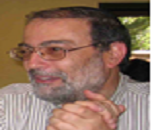
Biography:
Jean-Paul Lellouche leads a laboratory dedicated to Nano-biotechnology and Polymer Science. His current R&D activities include “R&D developments in the materials science field interfacing with nano-biotechnology, i.e., conducting functional polymers; chemically modified hard nanoscale fillers; UV-photo-reactive nano(micro)particles [surface nano(micro)structuration of polymeric coatings, hybrid metallic catalytic particles]; antibacterial organic/inorganic NPs and coatings and; innovative surface modifications of iron oxide (magnetite/maghemite) NPs towards gene silencing (siRNA/microRNA in vitro/in vivo delivery) and anti-parasitic bio-activity”. Recently, he deeply focused on and elaborated various innovative organic chemistry-based methodologies for the development of effective covalent versatile interfacial chemistries towards chemically tailored non-toxic mechanically hard functional inorganic: Tungsten disulfide nanotubes and; tribology-effective fullerene-like tungsten disulfide nanoparticles.
Abstract:
Statement of the Problem: Tungsten disulfide nanotubes (INTs-WS2) and fullerene-like nanoparticles (IFs-WS2) are extremely hydrophobic and chemically inert inorganic nanomaterials, which quite strongly limits their usefulness in numerous mechanical hardness and tribology-relating research developments and subsequent industrial end-applications. Thus, the covalent attachment of any kind of functional organic and/or biology-relating species remains a quite critical developmental step towards highly innovative high-performance nanomaterials and multiphase composites in the field of essential interfacial versatile chemistries.
Methodology & Theoretical Orientation: In this context of highly challenging functionalization issue of these chemically inert hydrophobic nanomaterials, an innovative method of surface functionalization (versatile poly carboxylation – polyCOOH shell formation) of multi-walled inorganic nanotubes (INTs-WS2) and fullerene-like (IFs-WS2) nanoparticles has been successfully developed. This covalent functionalization method makes use of highly electrophilic and reactive ammonium salts (Vilsmeier-Haack (VH) complexes) in order to enable the introduction of a chemically versatile poly acidic (polyCOOH) shell onto the surface of VH-treated inorganic nanomaterials. Moreover, a significant statistical design of experiments (DoE) method has been also involved for global optimization of this multi-parametric poly carboxylation shell generation.
Findings: This INTs-nanotube sidewall polyCOOH-enabling functionalization showed extreme COOH-based chemical versatility for innovative-targeted interfacial chemistries. It enabled the effective fabrication of a wide range of covalent WS2- INTs surface modifications (polyNH2, polyOH, polySH) via polyCOOH chemical activation (EDC, CDI) and 2nd step covalent nucleophilic substitutions by short ï·-aminated ligands H2N-linker-X (X outer surface functionality).
Conclusion & Significance: Resulting fully characterized functional INTs-WS2 (f-INTs-WS2) have a quite wide potential for use as novel functional nanoscale fillers toward new mechanically strengthened and/or conductive composite polymeric matrices (case of hybrid polythiophene-decorated f-INTs-WS2 nano composites, Figure 1). Corresponding novel functional nanomaterials/nanoscale fillers have been also shown to be non-toxic in preliminary toxicity studies, which opens a wide R&D route/progress for relating end-user applications (cellular toxic CNTs nanofillers replacement for example).
Keynote Forum
Leonard F Register
University of Texas at Austin, USA
Keynote: Ensemble Monte Carlo methods and results for nanoscale Si and III-V n-channel FinFETs; non-equilibrium degenerate statistics, quantum-confined scattering and more
Time : 11:50-12:20
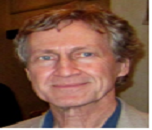
Biography:
Leonard F Register completed his J. H. Herring Centennial Professorship in Engineering within Electrical and Computer Engineering department at University of Texas at Austin. He is a member of Microelectronics Research Center; Fellow of Institute of Electrical and Electronics Engineers (IEEE) and; Fellow of the American Physical Society (APS). He is a Device Theorist whose research is focused on “Understanding and modeling nano-scale electronic and mageto-electronic devices and the essential physics underlying their operation”. His current research interests include “Alternative materials and device geometries for CMOS; alternative materials, state variables and switching methods for beyond CMOS devices and memory; and quantum transport and quantum-corrected semi-classical transport”.
Abstract:
Particle-based ensemble semi-classical Monte Carlo (SCMC) remains a benchmark in semiconductor device research, because of combination of relative computational efficiency, first-principles transport physics, and the ready ability to model scattering. The latter contributes not just to injection efficiencies, but screening of potential wells, thermalisation of carrier distributions (particularly among energy valleys), and source drain-resistance. However, particle-based ensemble semi-classical Monte Carlo (MC) methods must employ quantum corrections (QCs) to address quantum confinement and degenerate carrier populations to model today's and tomorrow’s ultra-scaled MOSFETs. We describe the most complete treatment of quantum confinement effects and carrier degeneracy in a three-dimensional (3D) MC device simulator to date, and apply them to simulation of n-channel Si and III-V FinFETs. Far-from-equilibrium degenerate statistics (beyond hot Fermi distributions), QC-based modeling of surface-roughness scattering, quantum-confined phonon and impurity scattering are considered, in addition to quantum confinement-induced redistribution of charge carriers in real-space and momentum-space. The use of fractional “subcarriers” also minimizes classical carrier-carrier scattering that is incompatible with degenerate statistics, as well as providing improved statistics. FinFET simulations illustrate the contributions of each of these QCs. We show how collectively these modeled quantum effects can substantially reduce and even eliminate otherwise expected benefits of a considered In0.53Ga 0.47As FinFET over Si but otherwise identical Si FinFET, despite lower bulk electron masses and higher mobilities and thermal velocities in In0.53Ga0.47As, as illustrated in Fig. 1.
Keynote Forum
Yoshinori Sato
Tohoku University, Japan
Keynote: Defluorination-assisted nanotube-substitution reaction with ammonia gas for synthesis of nitrogen-doped single-walled carbon nanotubes
Time : 12:20-12:50

Biography:
Yoshinori Sato completed his Bachelor and Master degrees in Materials Science and Engineering at Yamagata University, Japan, in 1994 and 1996, respectively, and PhD in Graduate School of Engineering at Tohoku University, Japan, in 2002. In 2004, he joined the Graduate School of Environmental Studies, Tohoku University, as an Assistant Professor, and in 2010 became an Associate Professor. He joined the Institute for Biomedical Sciences, Interdisciplinary Cluster for Cutting Edge Research, Shinshu University, Japan, as a specially approved Visiting Professor, in 2014. His current research interests include “Defect engineering of carbon nanotubes”. He is an Editorial Board Member of Scientific Reports (Nature Publishing Groups). He is a regular member of the American Chemical Society (ACS), the Materials Research Society (MRS), and the Electrochemical Society (ECS).
Abstract:
Nitrogen doping of single-walled carbon nanotubes (SWCNTs) plays a significant role as advanced functional materials. The methods of nitrogen doping are classified into two categories: Direct-synthesis doping and post-synthesis doping. Although a number of direct-synthesis nitrogen doping methods for SWCNTs have been studied, it is hard to control the number of nitrogen atoms and retain the crystallinity of nanotube framework. In contrast, little post-synthesis doping has been reported until now. In addition, these methods require high temperature (>1000 K), and the nitrogen contents of the resulting samples were low (<1.0 at.%). These are considered to be due to the low reactivity of SWCNT surface. Here, we report a new facile method to synthesize nitrogen doped SWCNTs by the reaction of fluorinated SWCNTs (F-SWCNTs) with ammonia gas. F-SWCNTs were prepared by fluorination of highly crystalline SWCNTs (hc-SWCNTs) synthesized by a direct current arc discharge, using a mixture of F2 (20%) and N2 (80%) gases. The F-SWCNTs placed into a reactor tube reacted with flowing a mixture of NH3 (1%) and N2 (99%) gases at the temperature range of 573-873 K for 30 min. The resulting samples were characterized using X-ray photoelectron spectroscopy (XPS), high-resolution transmission electron microscopy (HRTEM), and Raman scattering spectroscopy. The XPS survey spectra of the samples after ammonia gas reaction revealed that nitrogen atoms were introduced into the SWCNTs at all reaction temperatures, and the maximum nitrogen content was estimated to be 3.0 at.% at 673 K. The XPS spectra of N1s region showed the SWCNTs had pyridinic, pyrrolic, and graphitic nitrogen atoms. Structural and electrochemical properties in this presentation will be discussed in detail.
Keynote Forum
MarÃa E Dávila
Instituto de Ciencia de Materiales de Madrid - ICMM - CSIC, Spain
Keynote: Novel silicon nano-objects
Time : 12:50-13:20

Biography:
María E Dávila research focuses on “The synthesis and characterization of low-dimensional materials with special emphasis on semiconductors”. Her interests include “Determining the structural and electronic structure of those materials”. She has expertise in “The use of synchrotron radiation techniques to explore the physics and chemistry of low-dimensional materials”. She completed her PhD in Condensed Matter Physics at University Auronoma of Madrid in 1996, followed by a Post-doctoral fellowship at University of Uppsala and KTH in Sweden.
Abstract:
The discovery of the formation of (OD) silicon nano-dot and (1D) silicon nano-ribbons (SiNRs) on Ag(110) was first reported in 2005. Silicon nano-dot are the smallest form of silicon nano-structures that exploit properties of quantum dots to localize magnetic or electrical fields at very small scales and the nano-ribbons are unique form of silicon grown by direct synthesis (in our case are silicon’s stripes grown along the substrate’s surface Ag(110) with ultra-thin width (<50 nm) following the bottom-up approach that could be assembled into functional devices. The first step in this aproach is the synthesis and characterization of this form of nano-silicon and the study of their chemical, physical and structural properties. To explore the potential of one-dimensional (1D) silicon nanoribbons SiNRs, it is important to control and vary their structure in terms of length, orientation and diameter, that could modify their electronic properties. In this talk, we will first focus on the synthesis and structural characterization of the Si nano-dot and SiNRs, and then on their fundamental properties and also their functionalization and reactivity. Finally, we will describe possible applications of the SiNRs on nanoelectronic devices.
Keynote Forum
Nathalie Raveu
LAPLACE - Centre National de la Recherche Scientifique, France
Keynote: Metamaterial device design with the extended modal theory
Time : 13:50-14:20

Biography:
Nathalie Raveu completed her MS degree in Electronics and Signal Processing in 2000 and PhD in 2003. She is a Professor at National Polytechnic Institute of Toulouse and Research Fellow at LAPLACE-CNRS (Laboratory of Plasma and Energy Conversion). Her research topics are oriented toward development of efficient numerical techniques to address innovative microwave circuits. During the last years, she has developed a new method for SIC’s study, metamaterial horns and plasma cavity.
Abstract:
Metamaterial device simulation often requires full-wave analysis which implies high memory storage. The computer capacity is sometime not sufficient to solve the problem. To overcome this problem, homogenization techniques may be applied, the results are generally obtained faster. However, the method accuracy may be contested since the results are strongly dependent on the proposed approximations. For waveguide and horn antenna analysis, the extended modal theory (EMT) has been developed. This method is based on metamaterial representation by surface impedance that is dependent on frequency, incidence angle and mode order. They can be isotropic or anisotropic but are independent of the position on the surface. These impedances are then introduced in an analytical dispersion equation to get the propagation constant and consequently the electromagnetic field formulation. The EMT result accuracy is compared successfully to full-wave analysis with computation time reduction. Based on this EMT, a new design methodology is proposed. Firstly, dispersion diagram and field cartography are determined for fixed surface impedances (in frequency and incidence angle). Surface impedance ranges are determined with regard to these results. Then, metamaterials are optimized to satisfy these ranges. Reduced crosssection waveguide with metamaterial walls has been designed (30% smaller than conventional metallic waveguide) with comparable performances (cut-off frequency, fields repartition) thanks to this methodology. First interesting results are also noticed on opened-waveguide antenna performances. The presented designs have been done in rectangular waveguide, circular waveguides are under investigation.
Keynote Forum
Claire Deeb
Centre de Nanoscience et de Nanotechnologies, France
Keynote: Electrically driven nanogap optical antennas
Time : 14:20-14:50

Biography:
Claire Deeb is a Research Scientist at Centre de Nanoscience et de Nanotechnologies (C2N), France where she conducts research in the field of Optics, Active Plasmonics, and Nanophotonics. She has an international experience through working at prestigious Argonne National Laboratory (ANL, USA) and at outstanding Northwestern University, where she was specialized in “Advancing plasmon nano laser sources, investigating energy transfer processes at the nanoscale, and exploiting the characteristics of single nano-objects”. She has also developed expertise in Nanofabrication, Nano-characterization, Optical Spectroscopy, and Near-Field Imaging. She has initiated and maintained collaborations with several leading groups at UC-Berkeley and Ludwig Maximilian University of Munich and has led many international projects. She has supervised two PhD theses, has given eight invited talks, and has published over 13 influential papers and one book chapter. Additionally, she has received two PhD awards and is serving the scientific community as an Editor of Progresses in Nanotechnology and Nanomaterials.
Abstract:
Gaps formed between metal surfaces control the coupling of localized plasmons, thus, allowing gap-tuning targeted to exploit the enhanced optical fields for different applications. Classical electrodynamics fails to describe this coupling across sub-nm gaps, where quantum effects become important owing to non-local screening and spill-out of electrons. The advantages of narrow gap antennas have mostly been demonstrated for processes like SERS that are excited optically, but promising new phenomena appear when such antennas are fed by electric generators. However, the extreme difficulty of engineering and probing an electrically driven optical nanogap antenna has limited experimental investigations of physical concepts at stake in these conditions. The feasibility of structuring electron-fed antennas as nano-light sources has been recently demonstrated; however, this configuration remains very limited. Too much power was lost as heat when operating the optical antenna, and the antenna operation time was limited by the structure lifetime to sustain a bias voltage for a few hours. The innovative structure that we suggest here will cope with all these limitations: ALD dielectric materials substitute the air gap to improve the antenna stability; a quantum efficiency of 10-1 is targeted owing to a significantly efficient antenna (two orders of magnitude higher field enhancement). The resulting source will operate at room temperature and have a tunable spectral response (ranging from visible frequencies to THz regime) defined by the antenna geometry and the applied bias. Also, this source will be compact, Si- compatible, and will not request specific emitting materials (e.g. III-V semi-conductors) to operate.
Keynote Forum
Guy Makov
Ilse Katz Institute for Nanoscale Science and Technology, Israel
Keynote: A novel nanometric cubic phase in monochalcogenide semiconductors – theory and experiment
Time : 14:50-15:20
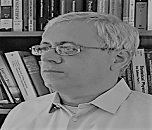
Biography:
Guy Makov is an Associate Professor of Materials Engineering at Ben-Gurion University of the Negev and his research interests is in Materials Physics. He has ompleted his BSc in Chemistry; PhD in Chemical Physics at Tel Aviv University and Post-doctorate in Computational Materials Physics at Cambridge University and FZ Julich. His research aims to understand materials behavior under extreme conditions of size, temperature and pressure from a physical viewpoint, in particular electronic structure, equilibrium properties and response to mechanical deformations or irradiation. His areas of specific interest include semiconductor nanoparticles and the liquid state, phase diagrams, dislocations, defects and microstructure in metals.
Abstract:
A new nanometric cubic binary phase has been synthesized in the tin monoselenide and monosulfide systems, π-SnSe, π-SnS, as cube shaped nanoparticles. This new phase has unusual structural properties reflected in a large, 64-atom unit cell and promising optical properties due to the larger band gap and non-centrosymmetric structure of the crystal. It is also environmentally advantageous. This exciting discovery has already led to the publication of over 25 studies in less than 2 years. However, interpretation of the structure, bonding, stability and electronic properties has proven challenging. By introducing by ab-initio density functional calculations the structure, atomic positions and band gaps of these phases were determined and found to be in very good agreement with experimental measurements. Advanced theoretical studies including density functional calculations of the phonon spectrum that determined these phases to be mechanically stable and energetically close to competing structures such as rock salt and orthorhombic. Furthermore theory predicts that the monochalcogenides will exhibit other, as yet experimentally undiscovered, novel phases with promising properties. This study overview the latest results of our calculations and experimental studies.
